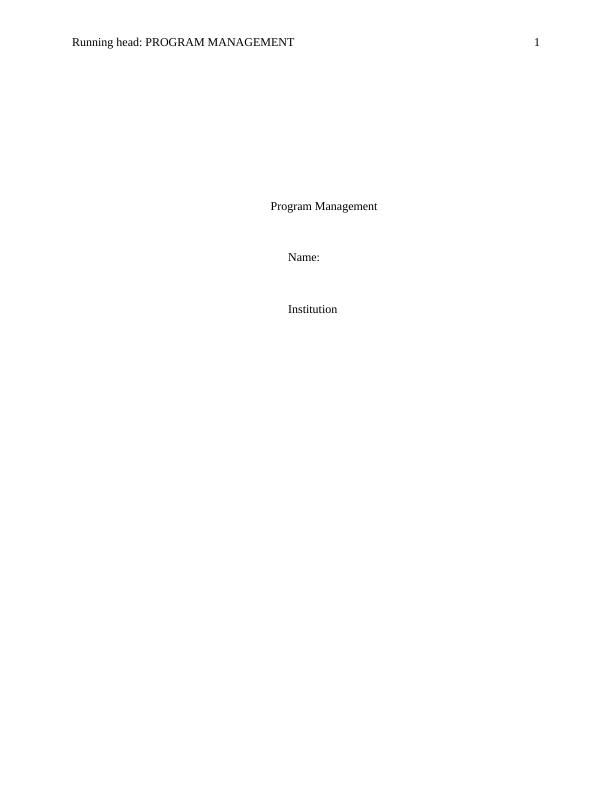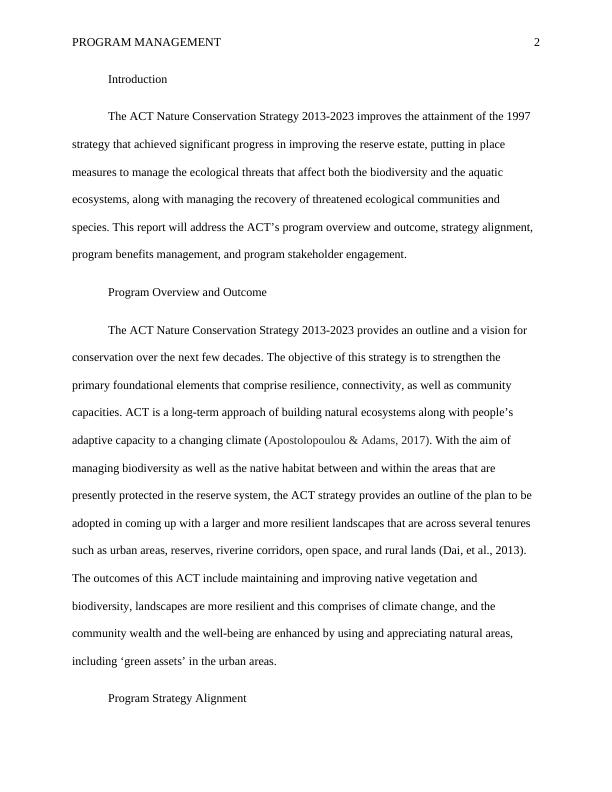Program Management
6 Pages1270 Words203 Views
Added on 2023-06-03
About This Document
The ACT Nature Conservation Strategy 2013-2023 improves the attainment of the 1997 strategy that achieved significant progress in improving the reserve estate, putting in place measures to manage the ecological threats that affect both the biodiversity and the aquatic ecosystems, along with managing the recovery of threatened ecological communities and species.
Program Management
Added on 2023-06-03
ShareRelated Documents
End of preview
Want to access all the pages? Upload your documents or become a member.
Conservation Interests in Australia Assignment
|12
|778
|18
The Article is on the Landscape Ecology
|7
|1147
|64
ENVS 818 Environmental Planning - Macquarie University
|11
|2719
|90
Rich Ecological Community And Biodiversity
|3
|470
|17
Nature Conservation Journal Management
|13
|2662
|13
Landscape Architecture - PDF
|11
|2935
|60



